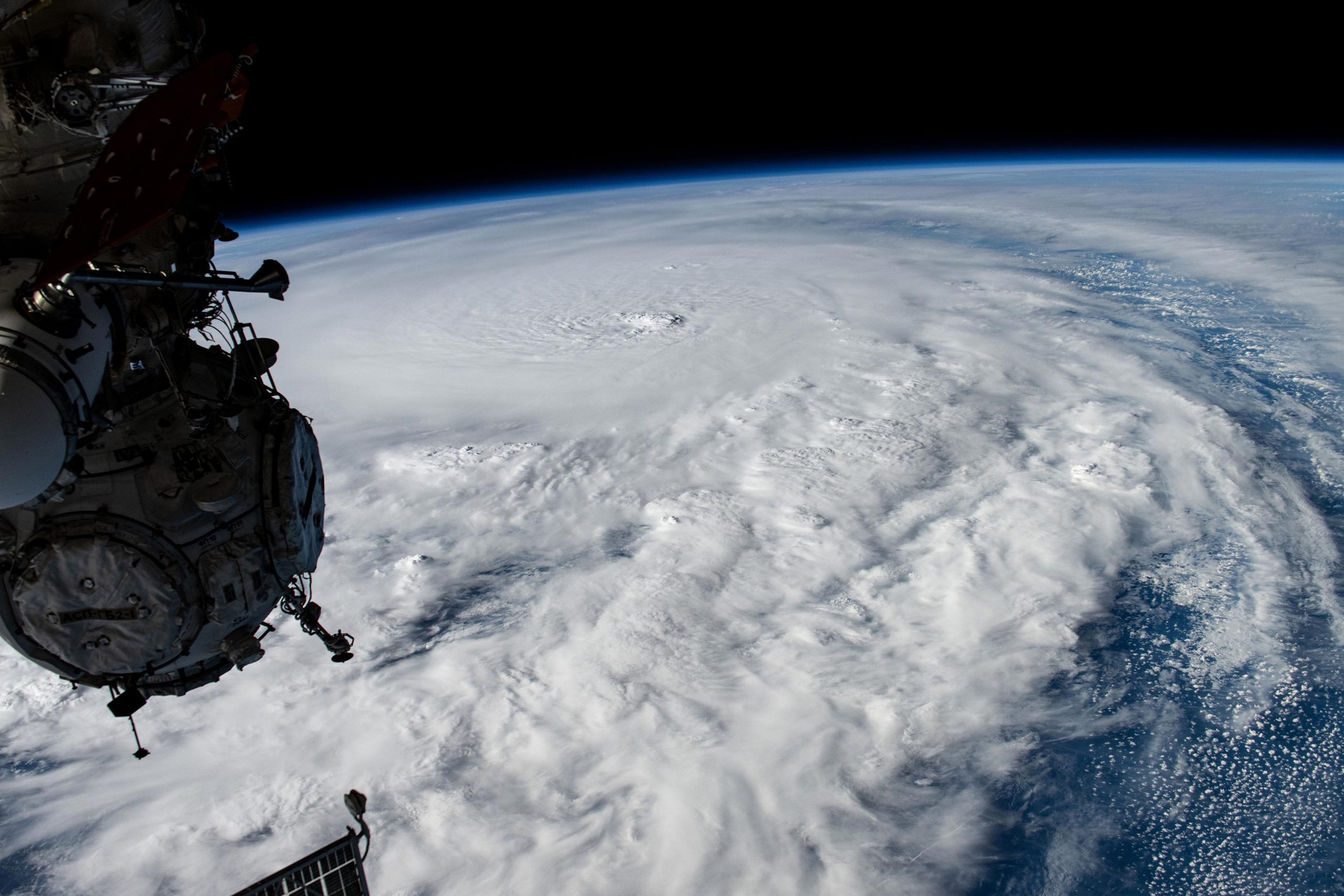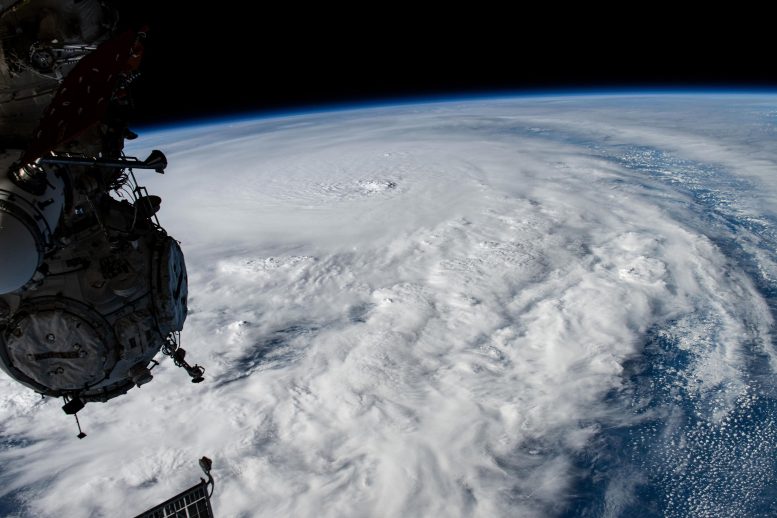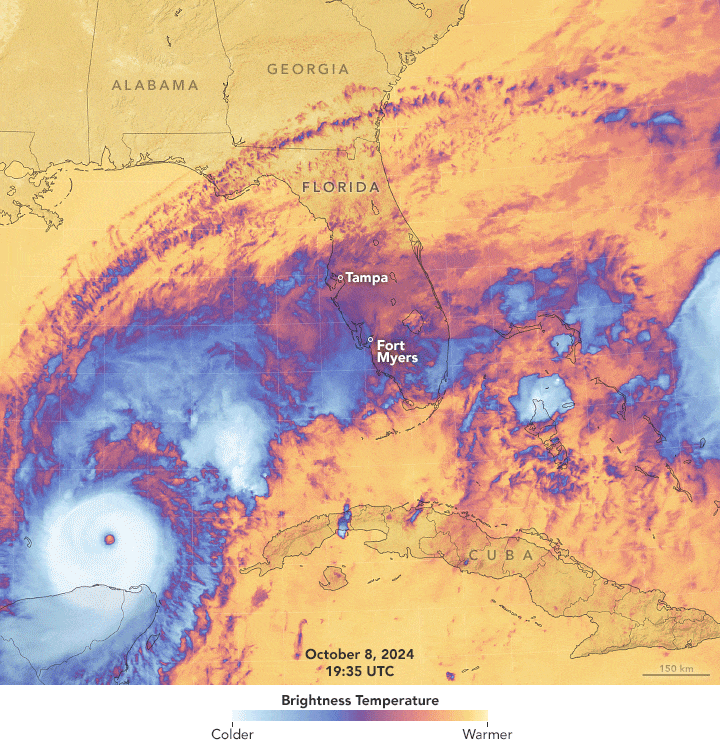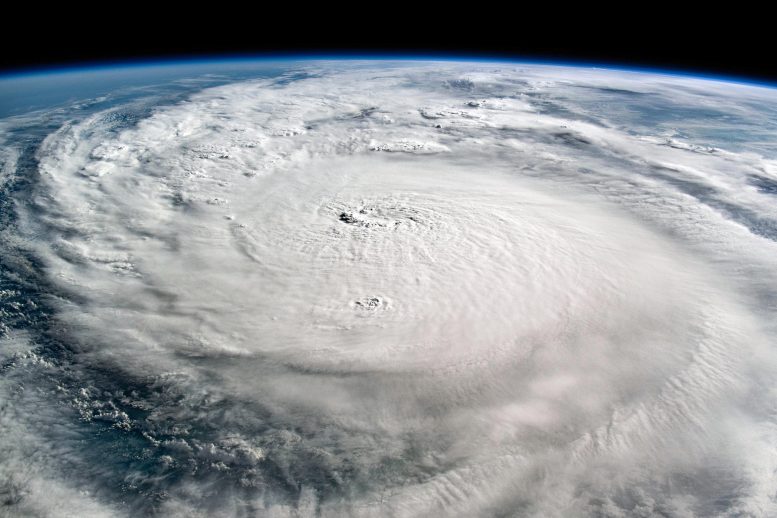

On October 9, 2024, Category 3 Hurricane Milton hit Florida with damaging effects, including heavy rainfall and strong winds.
Infrared satellite data tracked the storm, which fluctuated in intensity as it moved. NASA and other agencies used data from space to assist in disaster response efforts.
Hurricane Milton’s Impact on Florida
Hurricane Milton struck Florida’s west-central coast on the evening of October 9, 2024, making landfall south of Tampa as a formidable Category 3 storm. The hurricane pummeled the region with intense rainfall, powerful winds, and a life-threatening storm surge, as reported by the National Hurricane Center.

Visualizing the Storm Through Satellite Data
The animation above captures Milton in the days leading up to, during, and following its catastrophic passage through Florida. The false-color images utilize infrared signals known as brightness temperature, which effectively differentiates cooler cloud formations (shown in white and purple) from the warmer ground surfaces below (depicted in yellow and orange). The data for this animation were gathered using the MODIS (Moderate Resolution Imaging Spectroradiometer) and VIIRS (Visible Infrared Imaging Radiometer Suite) instruments aboard various NASA and NOAA satellites.
Since infrared data are based on temperatures rather than visible light, the data can be obtained day or night. This animation shows both daytime and nighttime images, beginning at 3:35 p.m. Eastern Time (19:35 Universal Time) on October 8 and ending at 3:08 a.m. Eastern Time (07:08 Universal Time) on October 10.
External cameras on the International Space Station captured new views of Hurricane Milton at 8:51 a.m. EDT on October 9 as it sped across the eastern Gulf of Mexico headed for a landfall along the west-central coast of Florida in the overnight hours of October 10. At the time of the space station’s flyover, Milton was a strong Category 4 hurricane packing winds of 155 miles an hour, moving northeast at 16 miles an hour. Credit: NASA
The Power of Hurricane Milton
Shortly before the first image of this series, Milton was a Category 4 storm with sustained winds of 155 miles (250 kilometers) per hour. It soon grew to a Category 5 storm and then weakened to a still-potent Category 3 storm prior to making landfall on October 9. The storm maintained hurricane-strength intensity and fast, forward speed while crossing Florida, emerging over the western Atlantic as a Category 1 storm with sustained winds of 85 miles (140 kilometers) per hour at the end of this animation on October 10.

On the morning of October 8, 2024, an astronaut aboard the International Space Station took this photo of Hurricane Milton as it churned over the Gulf of Mexico as a Category 4 storm. Astronaut photos of the region are being made available to various agencies via the International Disasters Charter and NASA’s Disasters Response Coordination System (DRCS).
NASA’s Role in Disaster Response
NASA’s DRCS has been activated to support agencies responding to the storm, including the Federal Emergency Management Agency (FEMA) and the Florida Geospatial Information Office. The team will be posting maps and data products on its open-access mapping portal as new information becomes available about flooding, power outages, precipitation totals, and other topics.
NASA Earth Observatory images by Michala Garrison, using MODIS and VIIRS data from NASA EOSDIS LANCE and GIBS/Worldview and the Joint Polar Satellite System (JPSS). Astronaut photograph ISS072-E-29325 was acquired on October 8, 2024, with a Nikon Z 9 digital camera using a 50 millimeter lens and is provided by the ISS Crew Earth Observations Facility and the Earth Science and Remote Sensing Unit, Johnson Space Center. The image was taken by a member of the Expedition 72 crew. The image has been cropped and enhanced to improve contrast, and lens artifacts have been removed. The International Space Station Program supports the laboratory as part of the ISS National Lab to help astronauts take pictures of Earth that will be of the greatest value to scientists and the public, and to make those images freely available on the Internet.